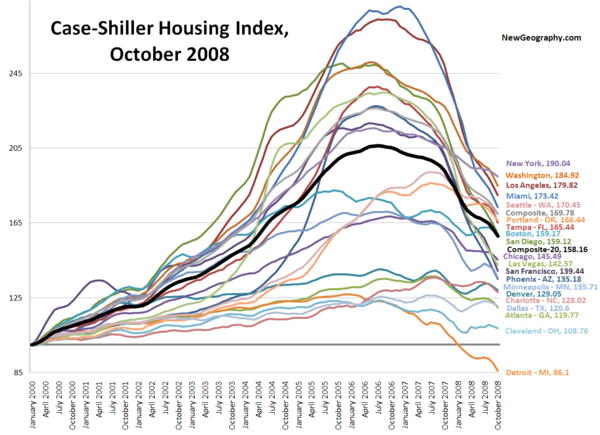A guest-post from Bill Steigerwald in Pittsburgh:
If the New York Times went to Berlin in 1936 to write a story about how that city was "Depression-proof," would it forget to mention that Germany was being run by a bunch of Nazis? If it went to Pyongyang tomorrow would it go ape over that city’s tidy orderliness without noting that North Korea was a totalitarian hellhole? If the Times bureau in Moscow reported on wheat production in Ukraine in 1933, would it overlook the government-designed famine that was killing - oops, sorry, let's not go there.
Seriously, is it too much to ask for a little Journalism 101 from America’s Rag of Record?
On Wednesday the Times, following a similarly lame piece of Chamber of Commerce journalism done by the Cleveland Plain Dealer on Nov. 23, did a glowing Page 1 story ("For Pittsburgh, There's Life After Steel" by David Streitfeld) about the Pittsburgh region's alleged imperviousness to the national recession.
You see, cities that have pioneered deindustrialization, shed huge chunks of population and shifted to service economies that run on curing sick people, college kids and government bureaucrats, as the former Steel City basically does, are now recession-proof, the rationalizing goes, because they’ve essentially been in low-grade recessions for decades.
Anyway, the Times – like the Plain Dealer and the parade of other national media that periodically traipses to this great town to gawk and glorify Pittsburgh’s many natural and man-made assets – forgot to tell its trusting readers that the city of Pittsburgh (where the Steelers and young Mayor Luke Ravenstahl play) is bankrupt and essentially in state receivership.
Nor did the Times note that Pittsburgh’s ever-dwindling, ever-aging, relatively poor and under-educated population (down in the city to 310,000 from 650,000 about 50 years) is subjected to crippling high taxes and deprived of basic city services like reliable snow-plowing.
Nor did it note that Pittsburgh's city schools spend more than $20,000 per student per year yet are hemorrhaging students annually.
Nor did it note that the city has wasted scores of millions of tax dollars on failed Downtown retail redevelopment schemes, subsidized professional sports stadia and a series of mass-transit boondoggles like our under publicized “Tunnel to Nowhere,” a 1.2-mile, $435-plus-million light-rail tunnel under the Allegheny River.
It's tragic enough that the Times’ national editors think that an over-taxed, chronically mismanaged city that has been deindustrialized, depopulated and abused by its political rulers for 70 years is favorably situated to deal with recession.
But to not devote one paragraph to the shameful failings and idiocies of Pittsburgh's public sector is a journalistic felony. Somebody please show the Times' editors how to Google the word "Potemkin."













